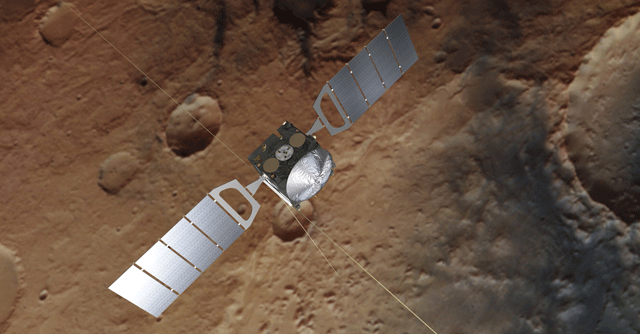
Mars radar that helped detect water on planet finally gets an upgrade from Windows 98


A Mars orbiter module operated by the European Space Agency (ESA), one of the oldest and most important missions sent to study the Red Planet, is finally getting a much awaited software upgrade after nearly two decades of collecting data for scientific research. This update will give the orbiter’s radar sounding equipment a new lease of life, and interestingly, also upgrade it from a software runtime environment that is still based on Microsoft’s (wildly) outdated Windows 98 operating system.
Last week, the ESA issued a statement detailing the firmware upgrade work that is being done on the Mars Advanced Radar for Subsurface and Ionospheric Sounding (Marsis) module of the Mars Express orbiter spacecraft. Andrea Cicchetti, the deputy project incharge for Marsis, said that the planned upgrade comes as the Italian national astrophysics institute wanted “to push the instrument’s performance beyond some of the limitations required back when the mission began.”
However, Cicchetti’s team soon ran into obstacles in order to upgrade the abilities of the Marsis radar module, since the instrument’s software ran on a runtime environment based on Microsoft’s Windows 98. The latter was introduced for consumers by Microsoft in June 1998, and retired from extended support in July 2006 – about 16 years ago.

To be sure, the use of legacy hardware and software in combination with cutting edge engineering and mechanics is not entirely unheard-of. For instance, in 2016, supercar and motor racing company McLaren divulged that in order to service and maintain its McLaren F1 supercar – one of the fastest road-legal and naturally aspirated vehicles ever made – it required the use of a specific laptop built by the now-defunct Compaq in the early 1990s.
The said laptops – Compaq LTE 5280 – used a specific conditional access (CA) card that authorized McLaren engineers to access, service and operate the car’s firmware and internals, thereby making these largely outdated laptops indispensable to the company. At the time, McLaren had said that it was working on upgrading the firmware of its F1 supercar to support newer systems that could authenticate engineer access through the USB access.
ESA’s Mars Express and Marsis are pivotal space instruments when it comes to Mars research, since the latter’s radar sounding was instrumental in helping detect signs of liquid water on the surface of the Red Planet. Going forward, the upgrade from the Windows 98 firmware is essentially giving the veteran probe an entirely fresh lease of life.

Colin Wilson, a scientist in the Mars Express project team, said that the erstwhile low resolution data has already signalled the presence of liquid water near Mars’ south pole, and the new interface will help study this further.
“The new software will help us more quickly and extensively study these regions in high resolution and confirm whether they are home to new sources of water on Mars. It really is like having a brand new instrument on board Mars Express almost 20 years after launch,” he said.
